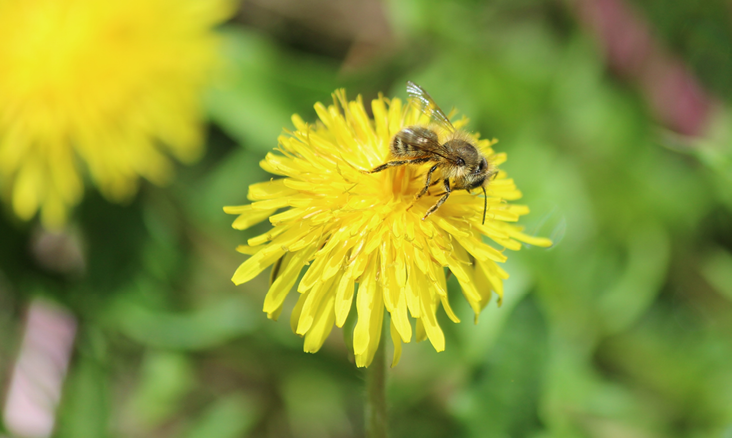Susannah B. Lerman

An example of an early-season bee taking advantage of the nectar resources provided by dandelions. Photograph by Susannah Lerman.
For the final question from my PhD defense in 2011, someone asked what additional activities we could do to help native birds in residential landscapes.
“Get rid of your lawns!” I quipped. Everyone nodded in agreement.
I passed my defense, celebrated—then thought, “What next?” The lawn question stuck with me, and I searched for studies that tested how lawns influence wildlife. I didn’t find many, but I came across a study from 2005 that calculated the extent of lawns in the U.S.—163,000 square kilometers (Milesi et al. 2005)—roughly the size of Maine, Massachusetts, New Hampshire and Vermont combined.
Americans intensively manage these green spaces with fertilizers, irrigation, and weekly mowing, rendering lawns insufficient as habitat for virtually any wildlife. Many of my wildlife biologist colleagues have dismissed lawns as habitats because of the management intensity. However, the 163,000 square kilometer figure stuck with me. Only a herculean effort could remove or significantly reduce the amount of lawn in the U.S., I realized. So, I revised my views of lawns. Instead of getting rid of them, how can we make them less bad?
To view the rest of the article you'll need to
subscribe. Bird Observer publishes original articles on birding locations, on avian populations and natural history, on regional rarities, field notes, field records, photographs, and art work.